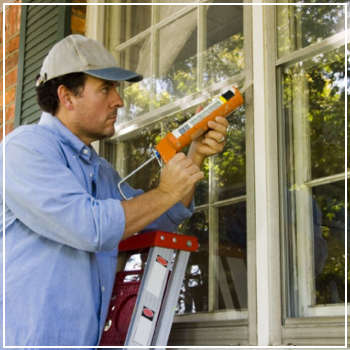How to Winterize Your Home
 In simple terms, winterization means to prepare something for winter weather. The process is commonly performed at summer cottages, on cold-weather equipment, watercrafts and more. When it comes to your home, you can winterize a vacant or primary residence in a few steps. Let’s take a look at how to do both.
In simple terms, winterization means to prepare something for winter weather. The process is commonly performed at summer cottages, on cold-weather equipment, watercrafts and more. When it comes to your home, you can winterize a vacant or primary residence in a few steps. Let’s take a look at how to do both.
Winterize A Vacant Home
A property not in use during winter needs to have winterized plumbing to avoid burst pipes and other costly issues. When water is not running, any liquid left inside can freeze, which causes the pipe to expand. At a certain point, the pressure build-up becomes so strong that the pipe bursts open and causes flooding.
To begin the winterization process, completely shut off the main water valve, water pump and water heater. Then, open all valves and taps to drain them. These will be kept open for the season. For your hot water tank, you may have to connect a hose if it does not have its own floor drain. Excess standing water can be blown out using an air compressor. For toilets, sinks and shower tubs, add a small amount of antifreeze to prevent any leftover water from freezing and cracking in the drain traps.
Lastly, winterize interior and exterior pipes with insulation sleeves and seal any cracks with caulk. If you leave cabinet doors open, maintain the heating source at a low temperature to further protect the pipes from cold weather. You can also leave a faucet slightly dripping to keep water slowly moving through the pipes instead of freezing.
Winterize A Primary Home
There are steps full-time homeowners can take to reduce their energy consumption leading up to winter. First, clean or completely replace furnace filters. Even if there is only a slight layer of dust, filters that are older than one month should be switched out. Monthly checks also keep you on top of maintenance and repairs that could leave you without heat if ignored for too long.
Next, keep ceiling fans running. Although many people only use their fans during the warmer months, running them clockwise produces a warm breeze. Reduce your thermostat by several degrees and use the savings from your energy bill on holiday gifts!
While you may not be completely shutting off your water valves, it’s important to drain garden hoses and air conditioning units of excess water that could freeze and crack. These items should be stored away until the spring anyway.
Lastly, be sure to caulk or add weather-stripping to any areas of your home where you notice a cool draft. For instance, if the windows are not totally sealed, the cold air that leaks inside could decrease the energy-efficiency of your heat source by as much as 30 percent each year! If this statistic from the U.S. Department of Energy does not convince you to close cracks, you may also qualify for these home improvements to be funded by the state.
There are many steps that can be taken to winterize a home. At M.J. Fahy & Sons, we can perform some of the processes for you! To learn more about our residential winterization services, contact us today!




